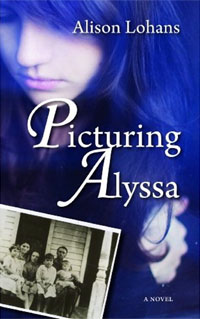| ________________
CM . . . . Volume XVII Number 41 . . . . June 24, 2011
excerpt:
Picturing Alyssa is about a modern Quaker girl who uses a photograph to travel back to 1931 and visit her great-grandmother when she was young. Alyssa has several problems in her life: her baby sister died at birth and her mother has retreated into depression; a girl at school is bullying her; most immediately, she has to come up with a project about her Quaker ancestors that will satisfy a teacher who has no sympathy with pacifism. When the photograph sends her back in time, Alyssa has a firsthand look at daily life on a farm. She tries to be helpful, but her great-grandmother's family ends up taking care of her after she gets attacked by a rooster and then burns her hand on the stove. Learning about how this Quaker family lived their faith, despite the difficulties of their life, gives Alyssa courage to face up to the bully and to present an honest report to her teacher. At the end of the book, Alyssa brings her mother back in time with her, and seeing the ancestral home is a catalyst for her mother to come out of her depression and become active in her children's lives again. The strongest scenes of this book are those describing Alyssa's relationships with her family. Her interactions with her brother are realistic and touching as they both deal with their parents' neglect. The characters of the great-grandmother's family are well-drawn and their interactions with each other and with Alyssa are convincing. The plot of Picturing Alyssa felt disjointed, bouncing from one problem to another without a clear sense of direction. It seemed almost as though two books were being pushed into one: a story about a Quaker girl figuring out how to deal with the violence of bullying without violating her pacifist beliefs, and a story about a family's dealing with death and how traveling back to meet their ancestors gives them a sense of continuity. Each story has the potential to be compelling, but there isn't time to develop either story fully. The narrative skips about on the surface without delving deeply enough into any of the issues to get interesting. Alyssa, herself, is perhaps the weakest character in the book. She spends most of the novel worrying about things and passively reacting to what happens to her. Her experiences in the past do not seem sufficient to change her into the confident girl who solves all her problems at the end of the novel; there is no sense of development or journey. Picturing Alyssa does a good job of bringing to life the Quaker faith and heritage. It will be of interest to those who like historical fiction, and it might initiate a discussion about bullying and how to respond to it, but, as a novel, it fails to engage the reader fully. Recommended with reservations. Kim Aippersbach is a free-lance editor and writer with three children in Vancouver, BC.
To comment
on this title or this review, send mail to cm@umanitoba.ca.
Copyright © the Manitoba Library Association. Reproduction for personal
use is permitted only if this copyright notice is maintained. Any
other reproduction is prohibited without permission.
NEXT REVIEW |
TABLE OF CONTENTS FOR THIS ISSUE
- June 24, 2011.
AUTHORS |
TITLES |
MEDIA REVIEWS |
PROFILES |
BACK ISSUES |
SEARCH |
CMARCHIVE |
HOME |
